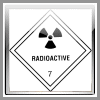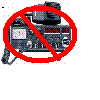| Author |
Message |
    
Foxhunter
New member
Username: Foxhunter
Post Number: 4
Registered: 4-2008

| | Posted on Sunday, May 25, 2008 - 9:55 pm: | 


|
Hi this is my second post and am hoping someone will read this and post a response. I am mainly using "2-way radio" in a mobile application. Although I have adequate power supply, A shop that performs Amateur Radio repairs, installations etc (1st Class General Radiotelephone licenses) recommended to use the Large, car audio-type "amplifier stiffening capacitors" in my installation----and I did. Here is their statement: AMPLIFIER STIFFENING CAPACITORS
Most automotive alternator/battery supply systems simply lack the capability to produce large amounts of power an amplifier craves. Whether the amplifier is a sound system or a linear type. Capacitors work by storing energy and then very quickly releasing this energy, on demand, to your power amplifier. The result is tremendous punch and dramatically improved voltage stabilization while filtering out unwanted AC noise caused by your engine or alternator.
Recommended applications are 1 Farad of capacitance per 1,000 watts (1 kW) of continuous amplifier output power.
Capacitors can be wired in parallel to increase value and power storage.
These stiffening capacitors are very simple to wire. There is a Positive (+) connection and a Negative (-) connection. The Negative connection connects to chassis ground and the Positive connection connects to your vehicles Battery (+) post.
I placed two, in paralell---for a total of 3 Farads. The purpose is to assist in the supply and stabilize the voltage. Car audio amplifier installers consider them of great value, not as a main supply but to minimize drop/fluctuation. Now on the other side, I have friends on 11-meter who run large RF amplifiers who laugh and claim they are of absolutely no value whatsoever in an RF amplifier application. These guys also are adamant that they are good only at the sub-base level and not for RF HF. So perhaps, are they indeed correct? Because of the duration of "keying the mic" is too long for the capacitor to be of any assistance? As a footnote I wasn't sold these caps, I had them from a car audio/amplifier set-up in a Mustang. I did take the time to do a nice, neat install though and I'm basically being mocked for this. I'd appreciate some input that has accuracy and content----mostly the truth. I'd appreciate any of the tech's or other member's inputs on this. Thank You, Foxhunter. |
    
Tech237
Moderator
Username: Tech237
Post Number: 1004
Registered: 4-2004
| | Posted on Monday, May 26, 2008 - 9:30 am: | 


|
OH I forgot to add that those 11m friends are wrong, and that it doesn't matter if the amp is audio or rf the caps effect the dc input, not what the amp is creating. Have them put a wattmeter in their amps output and a voltmeter across the dc input and watch the fun when they key up. I'd almost bet the dc in drops below 12vdc for a short period and then climbs back up to battery voltage, and the power out would also slowly build up - especially if these are 500w or more amps.
Simon
Tech237
N7AUS
|
    
Tech237
Moderator
Username: Tech237
Post Number: 1005
Registered: 4-2004
| | Posted on Monday, May 26, 2008 - 9:21 am: | 


|
The caps will not help over the longhaul, that is, once the amp is keyed and running the caps will not be doing a great deal of work. The caps supply a good voltage for a relatively short duration and only help with short fluctuations of supply.
Now at switch over to transmit, especially if you are running high power, yes the caps will help smooth out the voltage drop that can occur from the high current that is suddenly being pulled. This high current could even damage an alternator if it is higher than the alternator can supply.
Leave the caps in place they are not hurting anything, and yes they may even be helping.
Simon
Tech237
N7AUS
|
    
Patzerozero
Senior Member
Username: Patzerozero
Post Number: 4254
Registered: 7-2004

| | Posted on Monday, May 26, 2008 - 12:21 pm: | 


|
if you are drawing minimal current from a system that provides ample re-supply to sufficient battery reserve, you won't need bandaids. so, say the amp is a dx667v drawing max 65 amps with engine running & NO ADDITIONAL draw on the system(no heat/AC, wipers, stereo, electric fuel pump, etc), and you are using 2-800+cca batteries with 60+ minutes reserve, and a 105+ amp alternator, those caps will do absolutely nothing. on the other hand, if you are running a dx1600v drawing 180 amps, with AC running, electric fuel pump, & wipers on, thru the same batteries & alternator, the caps can CAUSE problems due to rapid fluctuations in voltage & current. while just the over taxing of the system alone could cause the voltage regulator to overheat & fail, the caps too could overheat & fail from excessive heat. did you ever see one of thos HUGE caps explode? pretty cool! sounds louder then an M80 becuase it exploded within the confines of your car, the amount of 'paper' that flies is astounding & the smell is pretty odd.
do it right & don't take shortcuts. you can burn up th car, or even kill somebody.
that example was a bit extreme, but totally possible, you CAN get away with taxing the system, to a degree, but why chance it? you should be able to run a 4 pill or 1x4 with little added expense. then next noticeable increase would require 5x16 transistors and probsbly a minimum $1000 to as much as $2500 cash outlay to build a fully functional system-LESS the cost of amplifiers, meters & coax! |
    
Hotwire
Senior Member
Username: Hotwire
Post Number: 2488
Registered: 1-2005

| | Posted on Monday, May 26, 2008 - 1:59 pm: | 


|
CB shop or car audio shop?I wonder why qualified techs would recommended installing caps UNLESS they recommended THEIR caps. Good ones are not cheap.
For much less money you can have your vehicles alternator upgraded (rebuilt). For instance the local shop in my neighborhood charges 180 dollars to rebuild a stock 100 amp GM alternator over to 200 amps.
The alternator is what powers your devices. A heavy battery source will help with volt drop to a point but the battery is really just there for the starter.
Car audio caps will be under heavy abuse using them with hi power RF amps.
MfJ makes a battery booster that is good for like 100 watt rigs.A 20 amp pull max. So you could actually run the radio with the motor off and hold good voltage until the protection circuit prevented the battery from going dead.
Whats a 20 amp pull on the average alternator in todays vehicles anyway? Unless you like to use your radio on battery only it's not a bad idea.
Just my 2 cents...73
KEEP IT REAL!
Kenny
cef491(27.115lsb)
2sf491(27.555usb)
Indiana
|
    
Foxhunter
New member
Username: Foxhunter
Post Number: 5
Registered: 4-2008

| | Posted on Monday, May 26, 2008 - 2:39 pm: | 


|
Firstly---I appreciate the responses. My installation of the Caps was due both to the Amateur Radio shop's recommendation and my familiararity with higher power car audio systems (I have--installed---500W and 1000W mobile stereo amps). That was what I was saying, that I do have more than adequate traditional power supply (high amperage alternator/battteries, 2AWG cables +/- both fused within 12" of the source and also fused at the radio and amp both +/-. All connectors are heavy-duty in nature, both crimped and soldered. I have a keyed master shut-off switch as well and tried to make multiple provisions for safety AND performance. I was concerned about voltage ripples/drops and impressed with the noise-filtering capabilites as well. The fact that high-farad rated capacitors can reinforce eachother (wired parallel as an array or bank) and increase in values also encouraged my installation.
As far as "explosions" and the like---that paints a grim picture and I have never saw one personally do that although It is quite possible, hopefully not likely. I am aware of the potential for discharge from them if they are shorted or exposed to levels of extreme heat. The dielectric and/or electrolytic contains PCB's which are not exactly "good for one's health" I know, and car/auto batteries have many of the same dangers as I have personally witnessed one literally explode and it was destructive. My install was not so much for a band-aid fix (I'm afraid that some/others may be doing just that) but as a reinforcement measure to provide a gainful upgrade or modification to my mobile set-up. I would appreciate any additional input, comments or suggestions by yourselves or anyone that might have something to add. If not I do thank you for being generous with your time and knowledge. |
    
Patzerozero
Senior Member
Username: Patzerozero
Post Number: 4255
Registered: 7-2004

| | Posted on Monday, May 26, 2008 - 5:39 pm: | 


|
foxhunter, it looks like you are already knowledgable on the subject of charging systems, as well as on your way to that '$1000' point i previously mentioned! so, now, what type of watts are you looking to make from your mobile xmit station? you may already be at sufficient current producing levels! |
    
Foxhunter
New member
Username: Foxhunter
Post Number: 6
Registered: 4-2008

| | Posted on Monday, May 26, 2008 - 9:46 pm: | 


|
Thanks again for the posts. I'll admit that I've currently been operating on 11-Meter at the somewhat mediocre wattage levels of a little over 300W. I did intend on running higher wattages (500W+ or so) when I did my wiring and set-up infrastructure. A short time ago I purchased 50 ft of 4/0AWG fine-stranded for an even bigger supply capability with the plans of running atleast 2000W or more. Initially, an entire novice, I had trouble with both SWR/Ground Plane issues as well as an electrical noise problem and I began reading Amateur Radio materials for insight and solutions. Naturally it led to interest in the legitimate high-power operating of a General-Class licensed operator on the Amateur Bands. 11-Meter will always hold a certain "allure" for its unorthodox and wild-west like atmosphere, and it will always keep, those who are both curious and "thick-skinned" (or is it thick-headed?) interested. I'm hesitant to mention that as I am aware of the disdain that both "camps" (CB & HAM) may have, at times, for eachother---but I am planning on going forward to study for my General examination. I will look forward to select areas/topics on the Copper Forum: All of the "Ask the Tech" subjects/threads----as well as "CB/HAM Legal", "Modifications" and more. I enjoy the subjects immensely. Thank you again for your input and I'd appreciate your (and other members too) insight into any questions, if you wouldn't mind me asking, in the (near) future. Happy Memorial Day, especially to our Veterans. |
|



